Nanosized container with photoswitches: release of cargo upon irradiation in water
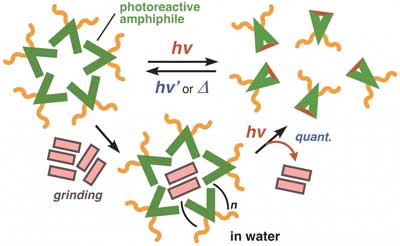 A versatile system with potential application for non-invasive drug delivery.
A versatile system with potential application for non-invasive drug delivery.
Apr 24th, 2019
Read more
 A versatile system with potential application for non-invasive drug delivery.
A versatile system with potential application for non-invasive drug delivery.
Apr 24th, 2019
Read more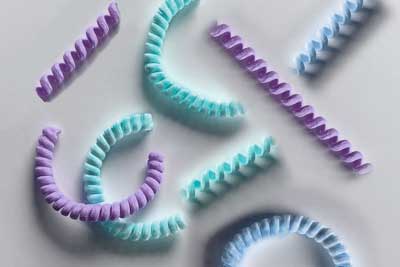 Twisted fibers coated with living cells could assist healing of injured muscles and tendons.
Twisted fibers coated with living cells could assist healing of injured muscles and tendons.
Apr 24th, 2019
Read more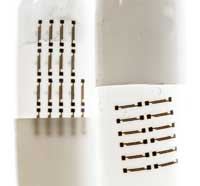 Researchers report that organic transistors composed mainly of ingestible materials can be easily transferred on edible substrates by means of untreated commercial tattoo-paper.
Researchers report that organic transistors composed mainly of ingestible materials can be easily transferred on edible substrates by means of untreated commercial tattoo-paper.
Apr 24th, 2019
Read more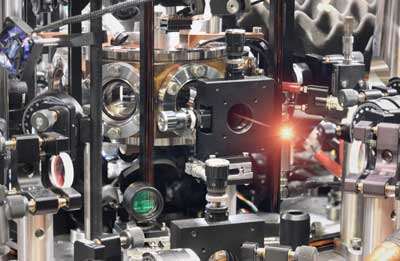 The distillation of spirits increases the content of alcohol relative to the water content. A similar method works on light quanta - photons. It extracts individual photons from a light source, reduces the unwanted vacuum component, and heralds this event.
The distillation of spirits increases the content of alcohol relative to the water content. A similar method works on light quanta - photons. It extracts individual photons from a light source, reduces the unwanted vacuum component, and heralds this event.
Apr 24th, 2019
Read more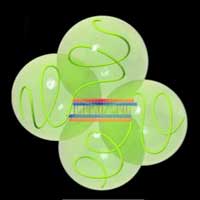 Nanomachines aim to deliver cancer drugs to hard-to-reach areas like the brain.
Nanomachines aim to deliver cancer drugs to hard-to-reach areas like the brain.
Apr 24th, 2019
Read moreA spray- or brush-applied fire retardant coating made from nanocellulose is well suited for improving the fire properties of wood-based materials. It reduces the access of oxygen to the surface, thus significantly inhibiting combustion.
Apr 24th, 2019
Read more A new method could be used to look at chemical reactions that other techniques can't catch, for instance in catalysis, photovoltaics, peptide and combustion research.
A new method could be used to look at chemical reactions that other techniques can't catch, for instance in catalysis, photovoltaics, peptide and combustion research.
Apr 24th, 2019
Read more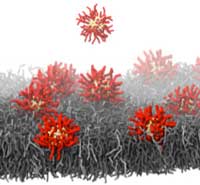 Scientists investigated the physical and chemical influences when gold nanoparticles interact with a model biological membrane, in order to identify the behavioural mechanisms taking place.
Scientists investigated the physical and chemical influences when gold nanoparticles interact with a model biological membrane, in order to identify the behavioural mechanisms taking place.
Apr 23rd, 2019
Read more Physicists have developed a nanocomponent that emits light particles carrying quantum information.
Physicists have developed a nanocomponent that emits light particles carrying quantum information.
Apr 23rd, 2019
Read more A new detector using photonics to identify E. coli bacteria from a tiny drop of blood, and produce a while-you-wait diagnosis in less than thirty minutes is making a bold bid to reduce the mortality rate from sepsis by more than 70%.
A new detector using photonics to identify E. coli bacteria from a tiny drop of blood, and produce a while-you-wait diagnosis in less than thirty minutes is making a bold bid to reduce the mortality rate from sepsis by more than 70%.
Apr 23rd, 2019
Read more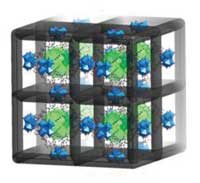 Researchers demonstrate that metallic platinum structures can be effectively casted into zirconium-based MOFs by a two-step infiltration/reduction process.
Researchers demonstrate that metallic platinum structures can be effectively casted into zirconium-based MOFs by a two-step infiltration/reduction process.
Apr 23rd, 2019
Read more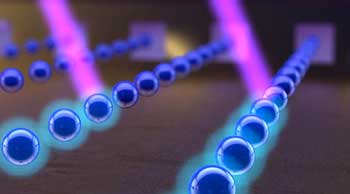 To a non-physicist, an 'atomic beam collimator' may sound like a phaser firing mystical particles. That might not be the worst metaphor to introduce a technology that researchers have now miniaturized, making it more likely to someday land in handheld devices.
To a non-physicist, an 'atomic beam collimator' may sound like a phaser firing mystical particles. That might not be the worst metaphor to introduce a technology that researchers have now miniaturized, making it more likely to someday land in handheld devices.
Apr 23rd, 2019
Read more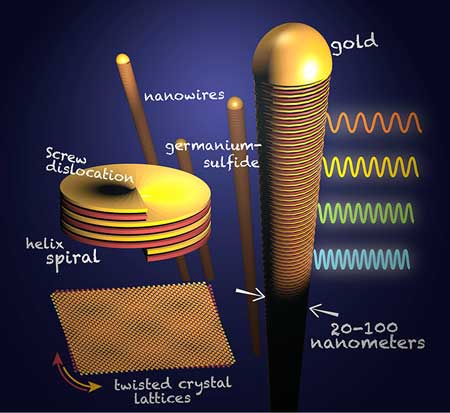 For years, researchers have been trying to find ways to grow an optimal nanowire, using crystals with perfectly aligned layers all along the wire. A team of engineering researchers sees an advantage to natural imperfection.
For years, researchers have been trying to find ways to grow an optimal nanowire, using crystals with perfectly aligned layers all along the wire. A team of engineering researchers sees an advantage to natural imperfection.
Apr 23rd, 2019
Read more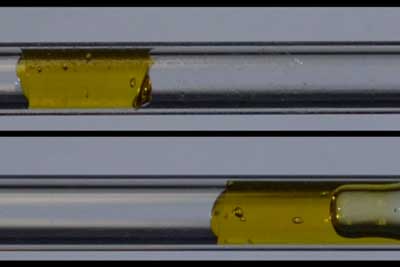 Engineered surface treatment can reduce waste and improve efficiency in many processes.
Engineered surface treatment can reduce waste and improve efficiency in many processes.
Apr 23rd, 2019
Read more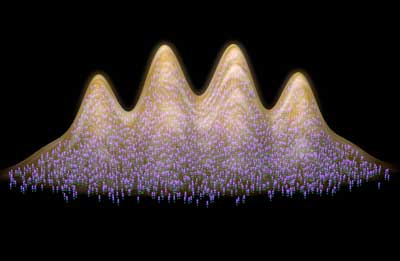 Scientists report on the observation of supersolid behavior in dipolar quantum gases of erbium and dysprosium. In the dysprosium gas these properties are unprecedentedly long-lived. This sets the stage for future investigations into the nature of this exotic phase of matter.
Scientists report on the observation of supersolid behavior in dipolar quantum gases of erbium and dysprosium. In the dysprosium gas these properties are unprecedentedly long-lived. This sets the stage for future investigations into the nature of this exotic phase of matter.
Apr 23rd, 2019
Read more A physical effect known as superinjection underlies modern light-emitting diodes (LEDs) and lasers. For decades this effect was believed to occur only in semiconductor heterostructures. Researchers now have found superinjection to be possible in homostructures, which are made of a single material.
A physical effect known as superinjection underlies modern light-emitting diodes (LEDs) and lasers. For decades this effect was believed to occur only in semiconductor heterostructures. Researchers now have found superinjection to be possible in homostructures, which are made of a single material.
Apr 22nd, 2019
Read more